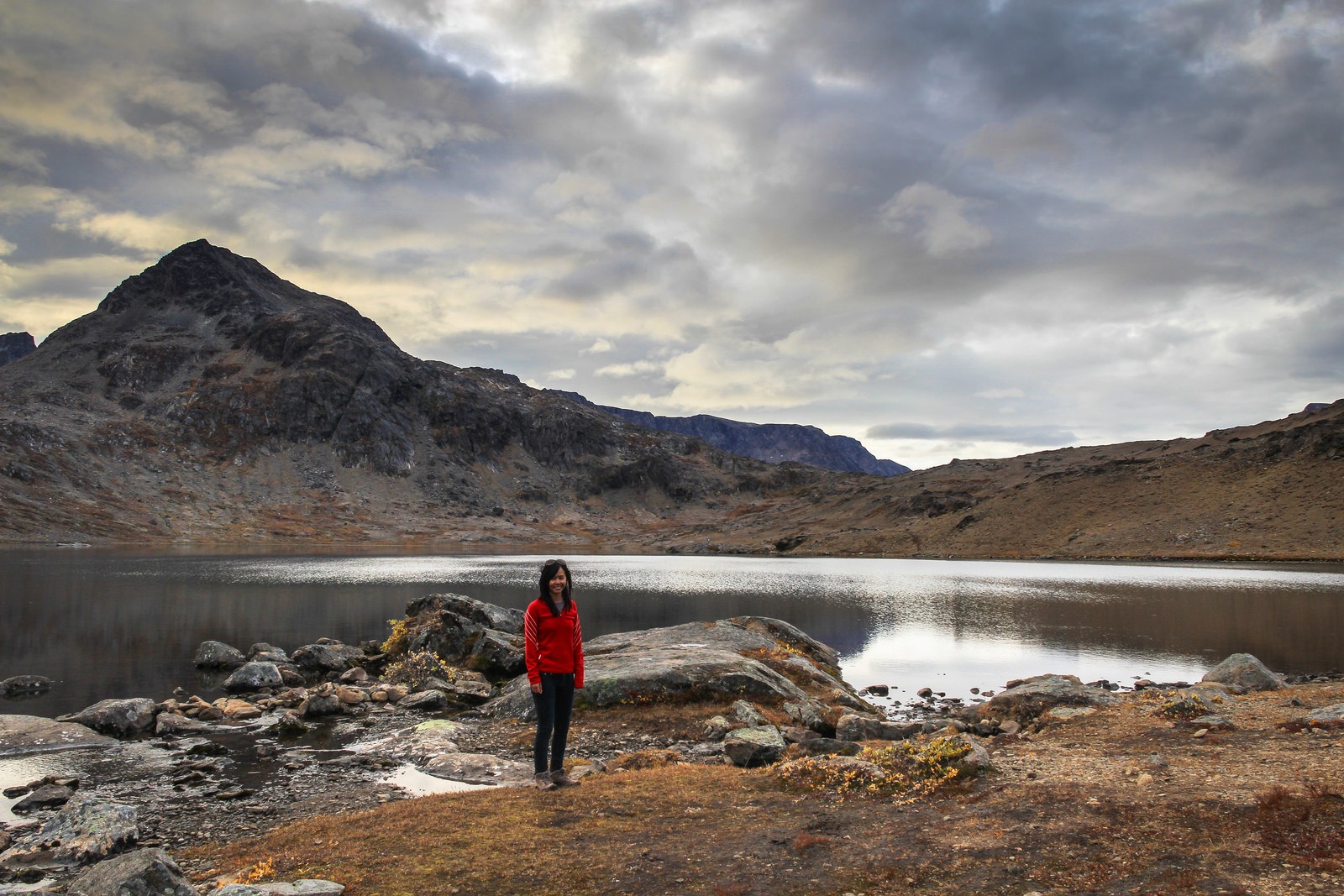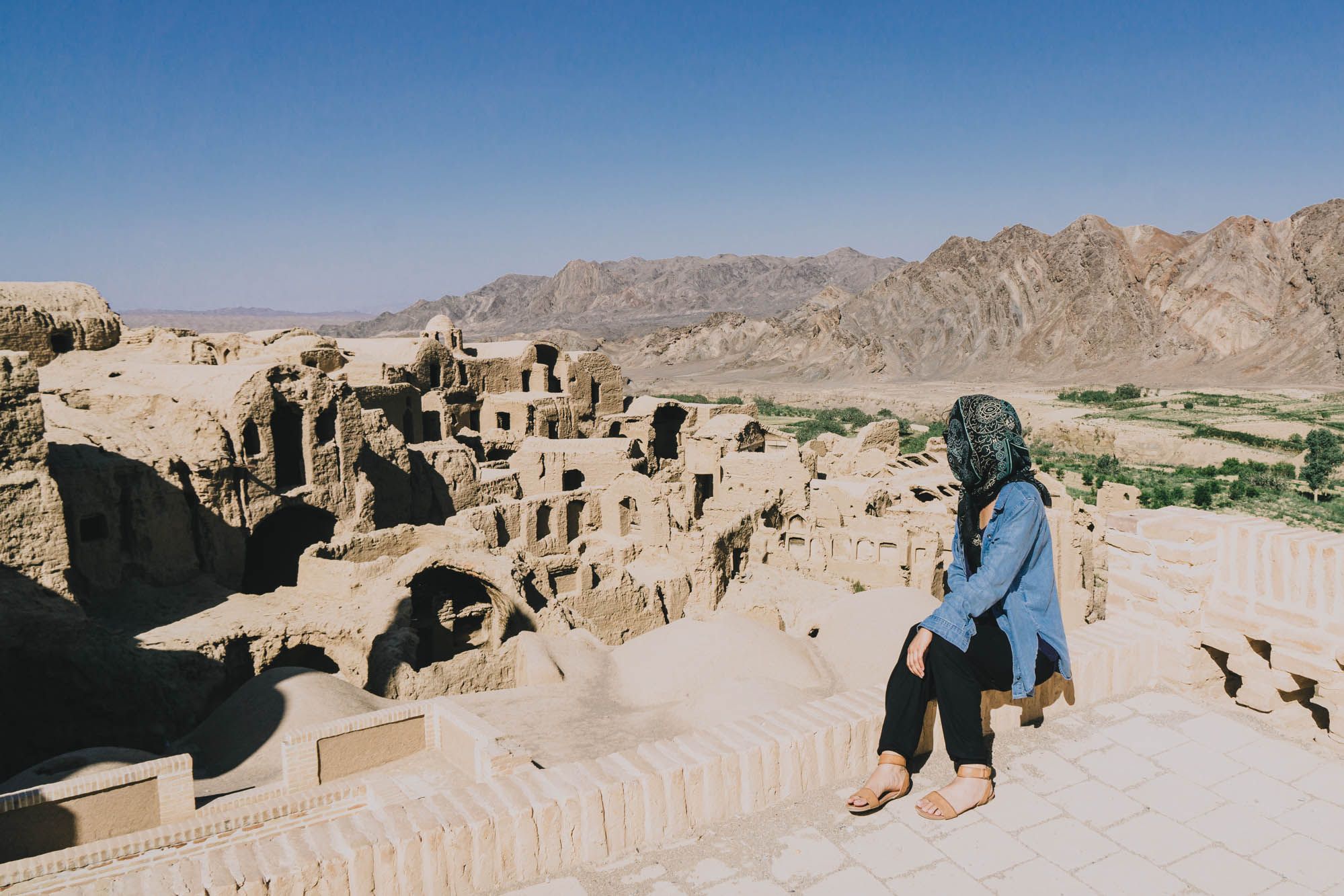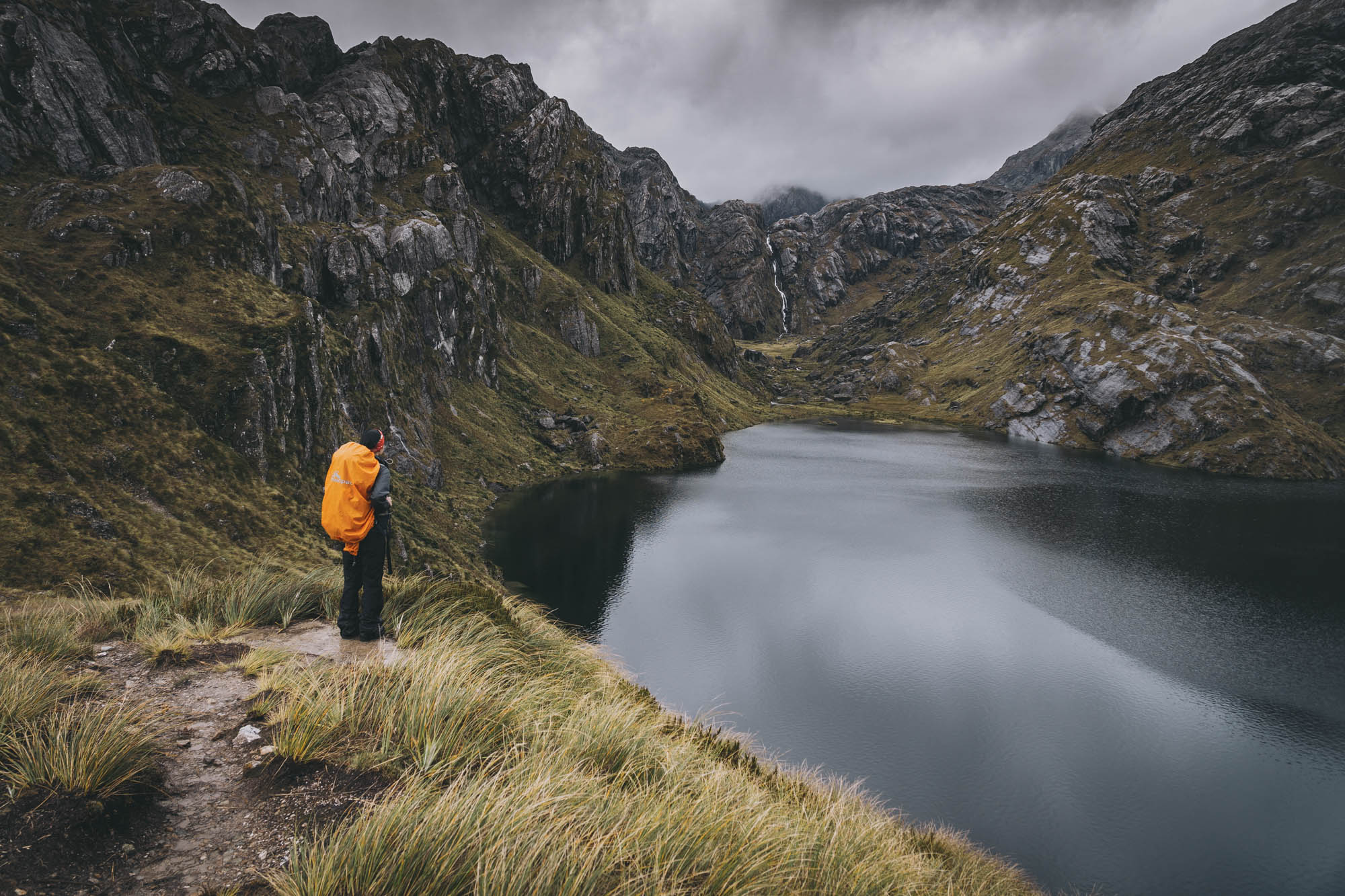Of all the amazing things I got to see and experience in Patagonia, climbing Villarrica volcano in Chile was probably the highlight. And I hadn’t even heard of it until I’d arrived in South America!
Towering over Pucon at 2860m and visible from just about every corner of town, Villarrica is an active volcano. In fact, its last eruption was as recent as 2015, and it saw the town of Pucon and the surrounding communities quickly evacuating as lava and ash hurtled into the sky, twice as high as the volcano itself. Thankfully, there were no fatalities.

And in 2019, just a few weeks before our trip to Pucon, Villarrica was placed on ‘alert’ following more rumbles and sightings of lava being ejected from the crater. It never culminated in a full-on eruption, but shortly before we’d arrived, Villarrica had been angrily tossing lava from its top and guided hikes to the crater had been put on hold.
We arrived in Pucon to perfect weather and a subdued Villarrica. If it isn’t crazy volcanic activity keeping climbers away, it’s the volatile weather around Villarrica (hikers often have to wait days for the perfect climbing window). For once, the stars had aligned – we were on track to climb Villarrica the next day.

What is the hike up Villaricca like?
I was in two minds about the hike. On one hand, after climbing Nyiragongo (DRC) and Erta Ale (Ethiopia) and becoming rather hypnotised by the sight of lava, I was intrigued at the possibility of getting to see some within the crater of Villarrica. On the other hand, Villarrica is steep, a perfectly shaped conical stratovolcano that is overwhelming to even look at – and requires a 1500m elevation gain to reach the summit.
But of course, I still signed up.
The next day, I was up way too early and bundled onto a shuttle bus to get geared up for the long climb to Villarrica’s summit. The vast majority of climbers go with guides, a sensible rule given the dangers of this hike. People have fallen victim to this volcano’s tricky terrain (snow, ice and very steep) and volatile weather. People have lost their lives. I was very glad to be in good hands, with the experienced guides of Antu Rios y Montanas.

After getting geared up with helmets, crampons, an ice axe, a backpack, and all the appropriate clothing we’d need, we made our way to the base of Villarrica. In the days of late spring (we were there in November), the slopes of the volcano were still covered in pearly snow, painting the landscape white almost all the way down to the base. Against the bluebird sky, it was beautiful to look at – but would be much more difficult to climb.


There’s a chairlift from the base of Villarrica that goes up to an old ski hut partway up the volcano; it normally cuts off about an hour and a half of hiking time, but of course was happily out of action on the day we arrived (not sure if it was because we were in between winter and summer seasons, but don’t bank on it always being available). In some ways, this was a blessing as we didn’t have to make the decision on whether or not to take it, and the group was unable to split.
On the other hand, it did mean a significant amount more walking – most of it over compacted, slippery ice and snow. It was a relentless uphill, but the guides set a very reasonable pace that made it manageable. Near the top of this section, we stopped to put on our crampons, and our guide taught us how to use our ice axes in event of a fall, to stop ourselves from sliding off the side of the volcano. Looking down the side of volcano, we could definitely see how this was possible and paid very close attention to his demonstration!

The gradient of this volcano never lets up, in fact, it steepens the closer you are to the summit. Groups hike together like trails of ants, snaking up the side of the volcano in sweeping switchbacks under the close watch of the mountain guides. The zigzags make it more palatable climbing, but it isn’t easy going. The snow is thick and soft in places, and we have to watch our footing very carefully to make sure we don’t deviate from the trodden path. All is this is made more awkward by the crampons.
And with each turn of the switchback, we have to remember to switch the hand our ice axes are held in – it needs to be on the uphill side, so you can arrest effectively in event of a slip.



Our guides were fantastic, not only keeping an eye on the group, but also monitoring the weather ahead of time to make important decisions about safety and timing. We never felt rushed or unsafe, and were given adequate opportunities to rest, eat/drink and take in the view.
After a meal break just below a ridge (which we wishfully thought might’ve been just below the summit), we hit the even-more-exposed, even-more-incredibly-steep flanks at the top half Villarrica. At times, we’d look ahead and the slope was so steep it just looked like a vertical wall in front of us. It was seriously daunting.



Somehow, with slow measured zigzag movements, we managed to conquer this wall of snow and ice. Every now and then we’d allow ourselves to slowly turn around (honestly, it was so steep that any wrong move could’ve ended in badness) to take in the view. The weather was seriously stunning, and we could see lakes and mountains extending all the way into Argentina.






By the final push to the summit, I was somehow still brimming with energy and filled with anticipation. Donning our gas masks (Villarrica emits toxic fumes containing goodies like sulfuric oxide and hydrochloric acid) we climbed the last steep portion, eventually finding ourselves spilling out onto the rim of Villarrica’s majestic crater.



The summit was magic, breathtakingly beautiful both figuratively and literally (those toxic fumes are no joke). The sky was a soft, summery blue, laced with wispy clouds that seemed to blend into the snowy landscape so you couldn’t tell where the heavens ended and earth began.
We could see back to Pucon and Lake Villarrica, and even all the way to Volcano Lanin, another beautiful stratovolcano we’d passed at the Chile/Argentina border.


The crater is a whopping 250m wide, with sides that plunge dangerously inwards and so deep that you can’t easily see the bottom. Thick gases billow out from the depths below, and if you’re unlucky enough to have your mask off when the wind changes direction, it feels like being choked.
If you fell into that crater, it would certainly be the end of that.

Sadly, there wasn’t any visible lava (due to recent mini-eruptions) but it was hard to really feel disappointed. Not when the views were like this.



Coming down was, as always, a bittersweet feeling. But Villarrica had more surprises for us. You see, you don’t walk down Villarrica. At least, not when there’s snow.
Armed with a little plastic ‘sled’ that just barely fits your butt, and an ice axe to control and slow your movements, descending Villarrica involves sledding down the snowy slopes and hoping you don’t get launched off the edge!



It’s a little more controlled than it sounds (only just) as many of the sledding channels are pre-dug into the snow to avoid exactly that. Funnily enough, I actually struggled to gain speed on most of the runs because of my lack of substantial weight, and had to buddy up with a guide – which was actually great because it meant I just got to enjoy the views!
How to organise a Villarrica trek
Unless you are a seasoned mountaineer with documented experience and all the correct gear (in which case you can try and get your own permit with CONAF) current regulations require you to join an approved group and climb with a guide. Having been up there, I can definitely see why this rule has been put in place. Remember that people have gone missing and died up on Villarrica. Not only is the terrain dangerous, but this is an active volcano!

There are plenty of tour agencies in Pucon that make this trip, and I’d encourage you to do a bit of researching online and talk to the agencies in question before committing.
We went with Antu Rios y Montanas, and I could not recommend them highly enough. They supplied us with transport, quality gear, plenty of experienced guides and never made us feel rushed during our hike. They were clear that if weather issues meant we needed to go faster, or turn around, that they would communicate this to us fully. I felt very safe with them, despite the fact that we were perched on the edge of a very steep, active volcano for the whole day!

If you’re visiting Pucon dead set on climbing Villarrica, then I would advise that you give yourself a decent number of buffer days. Poor weather is one of the biggest barriers for those summiting Villarrica and you wouldn’t want to come all this way and be disappointed.
Best time to climb Villarrica
I honestly think we hit the sweet spot (out of luck) by climbing in mid-November. There was still a large amount of snow which meant we could sled almost the whole way down (in summer, you would have to walk a lot more) and the temperatures were very manageable, even up at altitude. Plus, everything looks all the more spectacular with that layer of white.
I think late October – November would thus be my preference if I was to climb again. However, hiking this volcano is most popular in the warm summer months of December to February. One possible down side of hiking in mid-November was perhaps that it was too early in the hiking season for the chairlift to be running (I’m really not sure on this one – just my guess). If this is an important factor for you, then you might be best to time your hike for the summer season.


It is apparently also possible to hike Villarrica in winter. I’d enquire with the agencies directly to find out what this might be like (other than very cold).
Remember that the weather around Villarrica change rapidly. Even if it looks like a beautiful day in the morning, trust your guides if they advise you against summiting.
Is Villarrica difficult or dangerous?
I’ll say it again – this is a 1500m elevation gain on very steep, snowy terrain. It takes between 7-9 hours to go up and come down, depending on whether you take the chairlift and group fitness levels. It is not a walk in the park, and you need to think carefully about whether or not it is within your fitness capabilities before signing up. Not everyone makes it to the summit.

Having said that, despite how overwhelming this volcano looks, it actually wasn’t half as bad as I was expecting. This is because of the way in which you climb, which involves taking very dramatic switchbacks that criss cross the steep surface. It also helps that you slide most of the way down, thereby saving your knees and muscles from the relentless downhill.
As for danger – short answer is yes, it has an element of this given you’re hanging off the side of a giant active volcano for the whole day. But if you’re with a good guide (as you should be) then this danger is minimised dramatically. I personally felt safe the whole time. As for volcanic activity, hikes are not allowed at all when alert levels go up, but obviously there is always an element of unpredictable risk when it comes to nature and you need to decide if it’s worth it for you.

While at the summit, you are definitely going to come into contact with noxious gases from the crater. A proper gas mask makes a world of difference, and is definitely something you want to make sure your tour agency is providing. Sunglasses also help with protecting your eyes from the stinging chemicals (as well as the harsh glare of sun off the snow).
A word of warning – some of the volcanic gases are known to cause mucosal damage and chemical burns, even at low concentrations. That’s the stinging, burning sensation you get in your eyes, nose and back of the throat. A few girls ended up with swollen, Botox-esque lips the day after the hike thanks to this!
What to pack for a hike up Villarrica
- Food and snacks, and plenty of drinking water. Bring a good stash of high energy snacks (think chocolate bars, nuts and the like) and something for lunch that can be eaten quickly while perched on the side of a volcano. There is no place to fill up your bottle, so bring water enough for the whole hike. I had a small water bottle, and a CamelBak.
- Sturdy, waterproof hiking boots. Most of the hiking agencies will supply these if you don’t have your own. When they say waterproof, they really mean waterproof, as you’re trudging through snow for most of the day and you don’t want to get wet, hypothermic toes. They also need to be robust enough to take crampons. Most people in my group borrowed boots and found them okay (a few blisters only); I had my Lowa’s triple checked by the guides the day before, and they gave me the go ahead (I had no problems with the snow or the crampons the next day).
- Layers. I wore merino inner, mid and outer layers, long hiking pants (shorts are definitely a no-go) and used an amazing windproof jacket supplied by the company as a hardshell. We were also provided with waterproof pants for the sledding down the volcano, so you don’t need to bring your own.
- Sunglasses and sunblock. The glare of the sunlight coming off the snow is incredibly intense, so you’ll want some protection against the UV. Sunglasses are also handy for the summit, to protect your eyes from the noxious, eye-watering fumes coming from the crater.
- Buff/Bandana. I always have one when I’m hiking, because they’re so darn handy (for holding your hair out of your face, warming your neck, covering your face etc) but I found it particularly useful up Villarrica as a quick way to protect my nose and mouth near the summit. Our agency provided us with gas masks as well, but we only donned those at the crater because it was so difficult to hike with them on! They also provided a spare bandana, which meant I had one to hold my hair back under my helmet as well.
- Gloves. I brought my own pair of light-weight merino gloves, which were great for the lower parts of the hike. Our trekking company provided us with a heavy duty pair for the summit and sledding, which easily fit over
- Camera and GoPro. I was happy to have my mirrorless camera with me to capture the awesome vistas, but the GoPro came in very handy for the sled ride back down!
- Backpack, gaiters, ice axe, crampons, helmet, gloves, bandanas, windbreaker and waterproof pants were all supplied by our hiking company.
Like this post? Pin it, or leave a comment below!



Recommended Posts









Leave a Reply